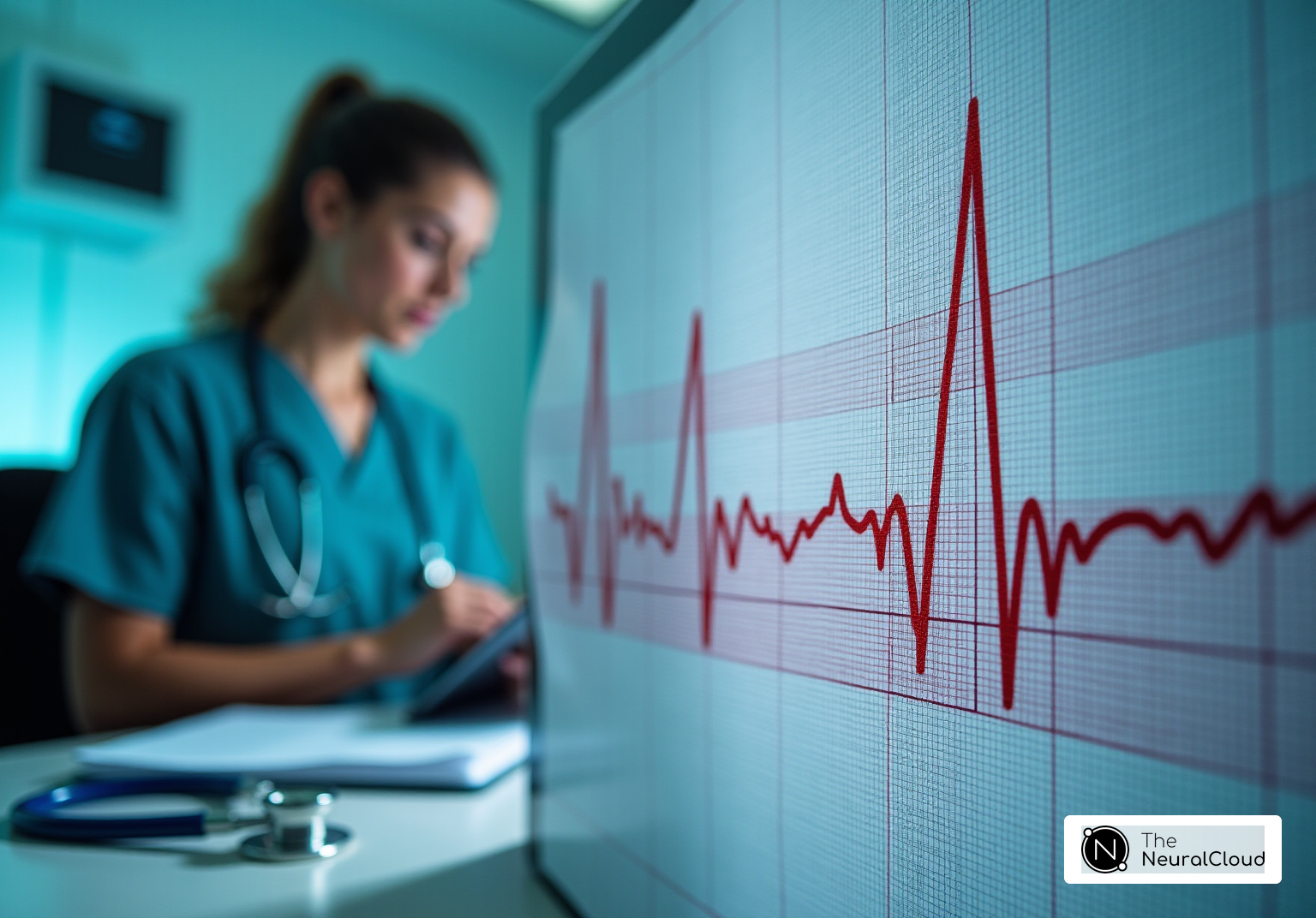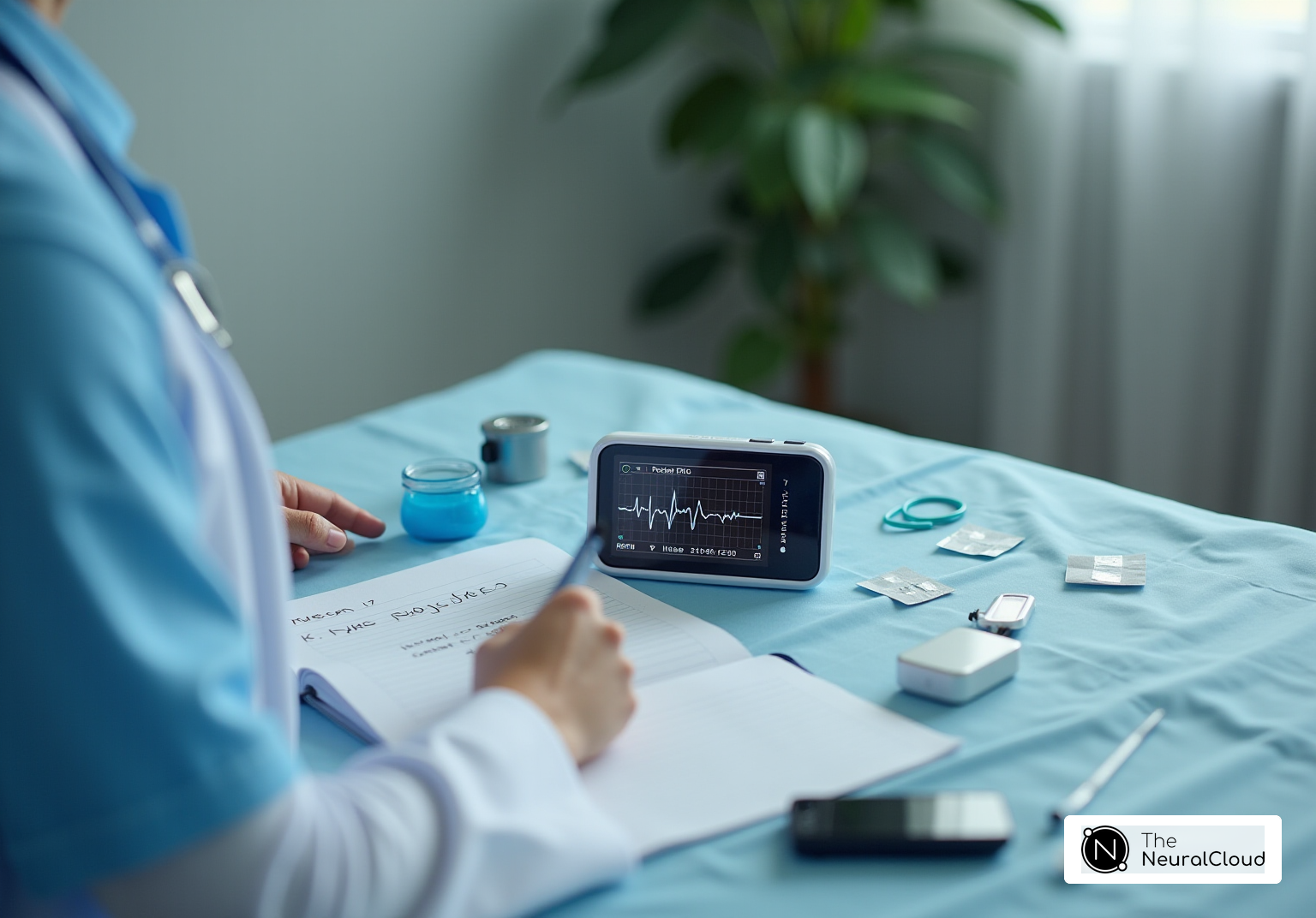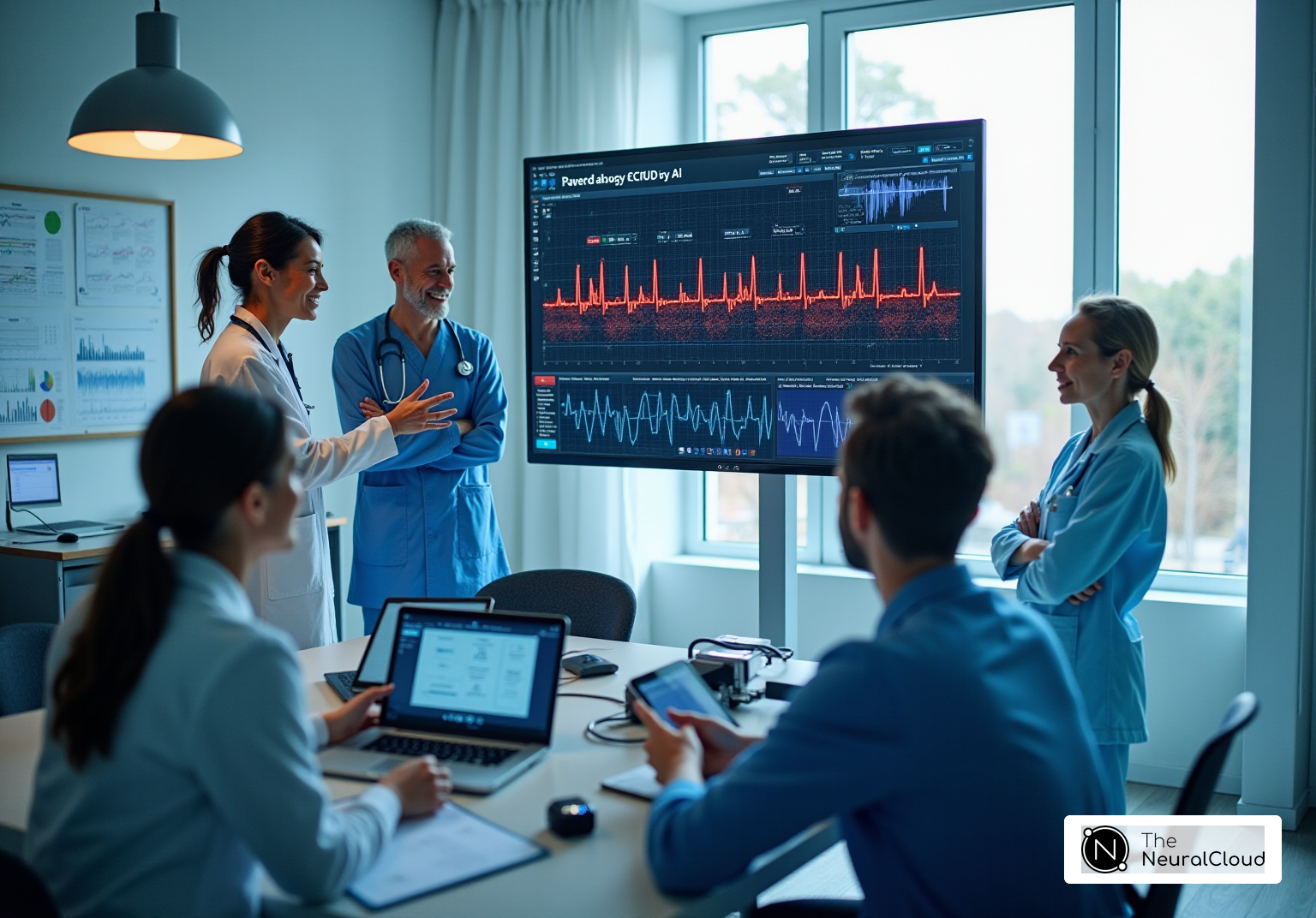Overview
The article highlights the challenges faced in ECG analysis, particularly in identifying abnormal readings related to heart disease. Traditional methods often struggle with noise interference and the complexity of waveform detection, which can lead to misdiagnoses and delayed treatment.
Enter the MaxYield™ platform, a cutting-edge solution designed to tackle these issues head-on. This platform automates waveform detection, significantly reducing the time healthcare professionals spend analyzing ECGs. Additionally, it filters out noise, ensuring that the data presented is clear and reliable. These features not only streamline the diagnostic process but also enhance the accuracy of results, allowing for quicker identification of critical cardiac issues.
The advantages of using the MaxYield™ platform are substantial. By improving diagnostic accuracy, healthcare professionals can make informed decisions faster, ultimately leading to better patient outcomes. This efficiency is crucial in emergency situations where every second counts. Furthermore, the platform's user-friendly interface ensures that both technical and non-technical users can navigate it with ease, making it a valuable tool in any healthcare setting.
In summary, the MaxYield™ platform represents a significant advancement in ECG analysis. Its ability to automate detection and filter noise directly addresses the challenges faced by healthcare professionals, enhancing their ability to diagnose and treat heart disease effectively. With improved accuracy and efficiency, the platform not only benefits healthcare providers but also contributes to better patient care.
Introduction
The heartbeat is a rhythm that tells a story, intricately woven with the threads of health and disease. As electrocardiograms (ECGs) become increasingly vital in diagnosing heart conditions, understanding their complexities is essential for healthcare professionals. This article explores the challenges in ECG analysis and how advanced technologies, particularly the MaxYield™ platform, are revolutionizing this field. By offering precise insights, the platform can significantly impact patient outcomes. With numerous innovations emerging, how can clinicians effectively leverage these tools to navigate the challenges of heart disease diagnosis?
ECG analysis presents several challenges, including the need for accurate interpretation and timely diagnosis. The MaxYield™ platform addresses these issues by providing advanced features that enhance ECG analysis. For instance, it utilizes sophisticated algorithms to detect anomalies in heart rhythms, ensuring that healthcare professionals receive reliable data. This capability not only streamlines the diagnostic process but also reduces the risk of human error.
The advantages of the MaxYield™ platform extend beyond just improved accuracy. By integrating seamlessly into existing workflows, it allows clinicians to focus more on patient care rather than getting bogged down by complex data. Additionally, the platform's user-friendly interface makes it accessible to both technical and non-technical users, fostering a collaborative environment in healthcare settings.
In summary, the MaxYield™ platform stands out as a crucial tool in the fight against heart disease. By enhancing ECG analysis through advanced technology, it empowers healthcare professionals to make informed decisions that can lead to better patient outcomes. As the landscape of cardiac care continues to evolve, embracing such innovations will be key to overcoming the challenges faced in diagnosing heart conditions.
Explore the Basics of ECG and Heart Disease
Electrocardiograms (ECGs) are crucial diagnostic tools that capture the heart's electrical activity over time. They provide essential insights into rhythm, size, and position—key indicators of heart disease abnormal ecg. Understanding the fundamental components of an ECG, such as P-waves, QRS complexes, and T-waves, is vital for accurate interpretation. Each component reflects specific electrical events within the heart, and deviations from established norms can signal various cardiac issues, including heart disease abnormal ecg, arrhythmias, ischemia, and hypertrophy.
For example, a wide QRS complex may indicate bundle branch blocks or ventricular rhythms, while absent P waves with irregular QRS complexes suggest atrial fibrillation. Familiarity with these basics empowers healthcare professionals to detect potential problems early, facilitating timely interventions. Typical pulse rates range from 60 to 100 beats per minute, with fluctuations indicating conditions like bradycardia or tachycardia. Cardiologists stress that a systematic approach to ECG interpretation is essential to avoid missing critical findings related to heart disease abnormal ecg, emphasizing the need for healthcare providers to be well-versed in ECG components and their implications for heart health.
The MaxYield™ platform enhances ECG analysis by employing advanced noise filtering and distinct wave recognition. This technology allows for the rapid isolation and labeling of critical ECG data, even in recordings affected by noise and artifacts. It transforms noisy recordings into detailed insights, delivering beat-by-beat analysis of up to 200,000 heartbeats in less than five minutes. Additionally, this system can recover previously obscured sections of lengthy Holter, 1-Lead, and patch monitor recordings.
By integrating the MaxYield™ solution into their workflows, healthcare providers can efficiently highlight potentially meaningful ECG data, addressing challenges such as physiological variability and signal artifacts. The algorithm evolves with each use, continuously improving accuracy and efficiency. With this product, the precision and effectiveness of ECG analysis are consistently enhanced, facilitating confident clinical decision-making.
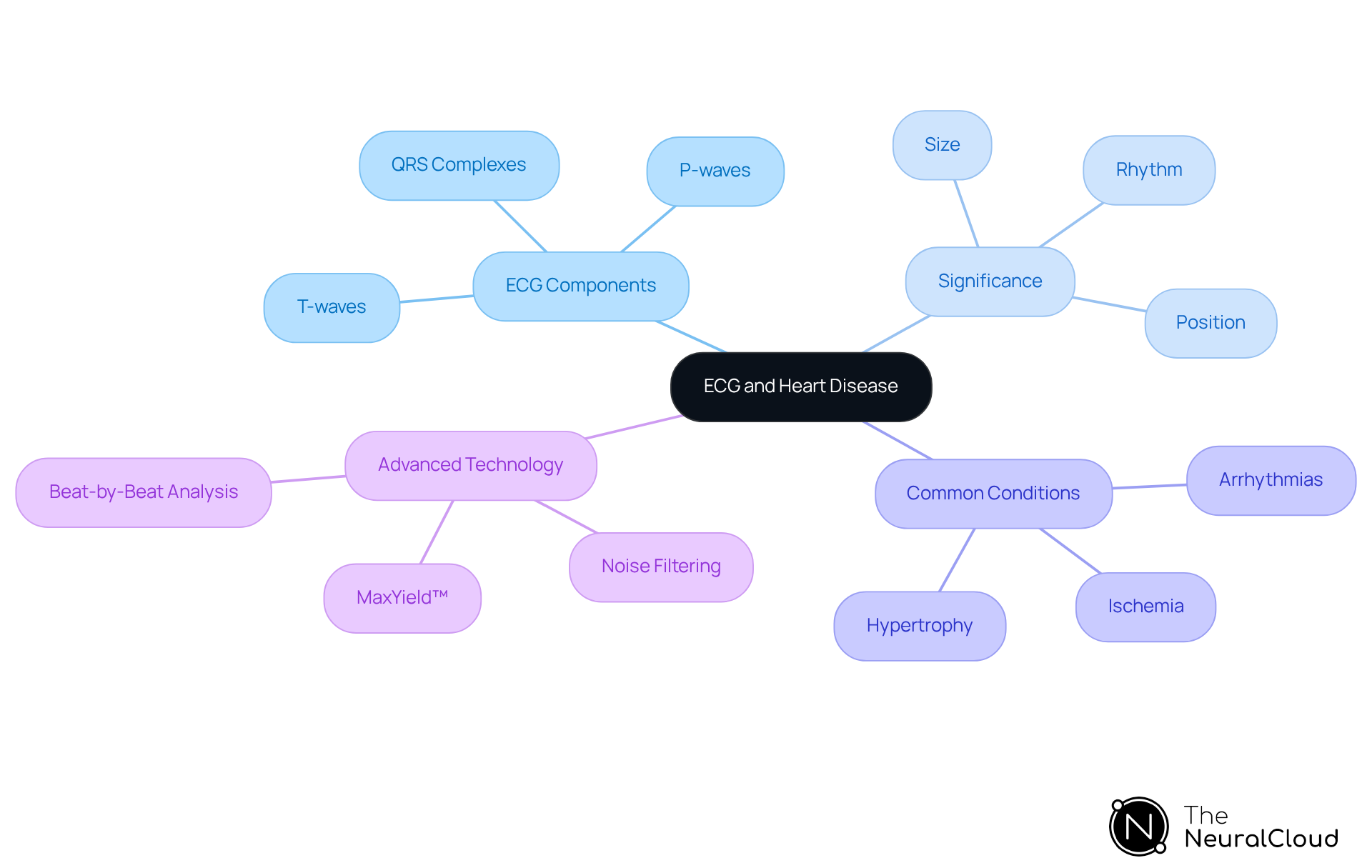
Identify Common ECG Abnormalities Related to Heart Disease
Common ECG abnormalities associated with heart disease present significant challenges in diagnosis and treatment. The MaxYield™ platform addresses these challenges by enhancing ECG analysis through advanced technology. Here are some common abnormalities and how the platform aids in their identification:
-
Atrial Fibrillation: This condition is marked by an irregular and often rapid heart rate, which can lead to serious complications like stroke. The MaxYield™ platform utilizes advanced noise filtering capabilities to enhance ECG clarity, making it easier for clinicians to identify this abnormality.
-
Myocardial Infarction: Changes in the ST segment, whether elevation or depression, can indicate a cardiac event requiring immediate medical attention. The platform's ability to recover previously hidden portions of recordings ensures that critical information is not overlooked, facilitating timely diagnosis.
-
Ventricular Hypertrophy: Characterized by elevated voltage in the QRS complex, this condition suggests that the heart is working harder than normal, often due to high blood pressure. With the precision of the MaxYield™ technology, healthcare providers can accurately evaluate voltage variations, even in noisy recordings.
-
Bundle Branch Block: This abnormality, indicated by a widened QRS complex, may signal heart disease. The platform's advanced wave recognition capabilities help differentiate this condition from physiological variability and signal artifacts.
By learning to recognize these patterns and utilizing the MaxYield™ platform, clinicians can make informed decisions regarding further testing and treatment. This ultimately leads to improved patient outcomes, showcasing the platform's significant advantages for healthcare professionals.
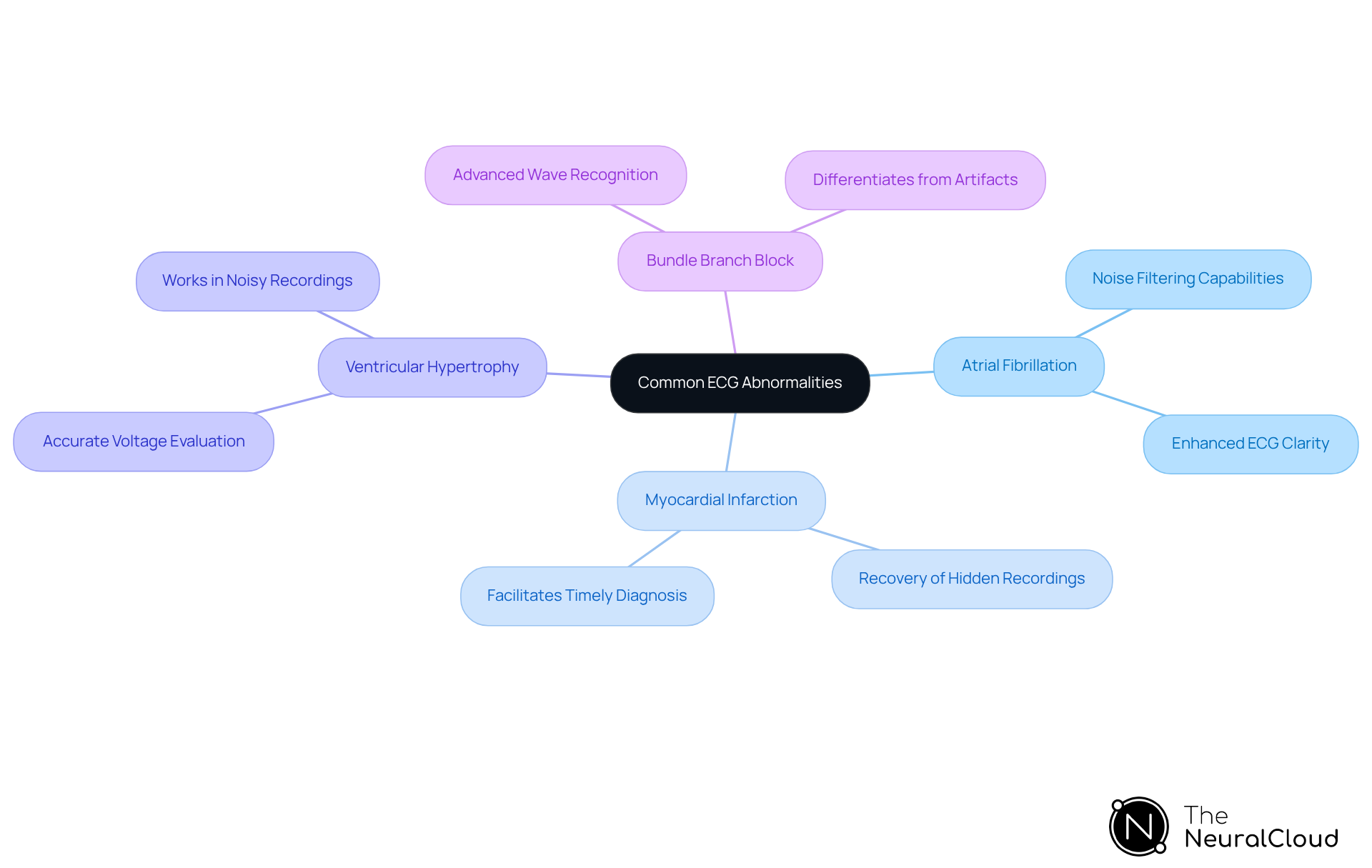
Utilize Advanced Technologies for Enhanced ECG Analysis
The integration of advanced technologies like AI and machine learning into ECG evaluation has significantly transformed the field. One notable platform, MaxYield™, utilizes sophisticated algorithms to automate the detection and tagging of ECG waveforms. This automation greatly reduces the time required for evaluation, allowing healthcare professionals to focus on patient care. By mapping ECG signals amidst noise, MaxYield™ isolates and labels key features in each heartbeat, enabling a detailed examination of 200,000 heartbeats in under five minutes.
MaxYield™ processes vast amounts of data rapidly, enhancing diagnostic accuracy while filtering out noise and artifacts. This ensures that clinicians receive clear and reliable data, which is crucial for effective decision-making. The platform's advanced noise filtering and wave recognition capabilities support healthcare providers in improving patient outcomes through faster and more accurate diagnoses. By adopting such technologies, healthcare professionals can streamline their workflow and enhance the quality of care they provide.
In summary, the MaxYield™ platform addresses the challenges faced in ECG analysis by offering features that automate and refine the evaluation process. The advantages of using this technology include:
- Reduced evaluation time
- Improved diagnostic accuracy
- Better patient outcomes
As healthcare continues to evolve, embracing these advanced tools will be essential for professionals aiming to deliver the highest standard of care.

Implement Effective ECG Analysis Workflows in Clinical Practice
To implement effective ECG analysis workflows in clinical practice, consider the following steps:
- Assess Current Processes: Evaluate existing ECG evaluation methods to identify inefficiencies and areas for improvement.
- Integrate Advanced Tools: Utilize platforms such as MaxYield™, which swiftly marks P, QRS, and T Wave beginnings and endings. This automation enhances data clarity and processing speed, allowing healthcare professionals to analyze more data in less time, ultimately leading to improved patient care.
- Train Staff: Ensure that all healthcare professionals are trained in using new technologies, including the neural network models developed by Neural Cloud Solutions. These models extract key features from signals and support the discovery of new digital biomarkers.
- Establish Protocols: Create standardized procedures for ECG assessment that incorporate advanced technologies. This ensures consistency and reliability in results. Documenting these workflows can aid in training and implementation.
- Monitor and Adjust: Continuously monitor the effectiveness of the new workflows and make adjustments as necessary to optimize performance.
By following these steps, healthcare providers can leverage the capabilities of MaxYield™ and the advanced neural network models to enhance their ECG analysis capabilities. This leads to better patient care and outcomes.
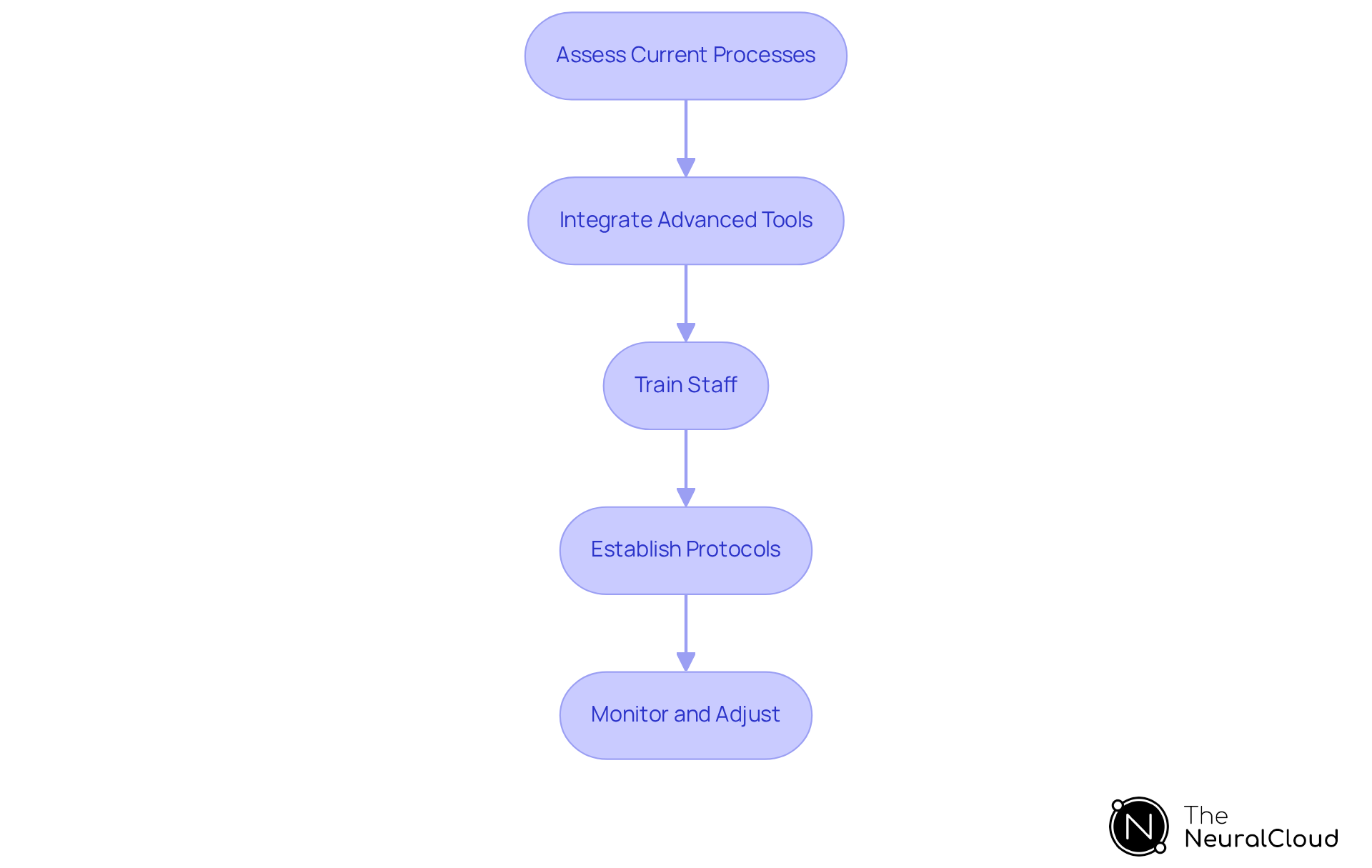
Conclusion
Mastering the complexities of ECG analysis is essential for healthcare professionals who want to improve heart disease diagnosis and treatment. The MaxYield™ platform offers advanced technologies that enhance the accuracy and efficiency of ECG evaluations. This capability enables timely interventions and better patient outcomes. Understanding the components of ECGs and their implications is crucial, as is the ability to identify common abnormalities that may signal serious cardiac conditions.
This article presented key insights into the fundamental aspects of ECG interpretation, the role of advanced technology in refining analysis, and practical steps for implementing effective workflows in clinical practice. Innovations such as AI and machine learning can automate and streamline ECG evaluations, allowing healthcare providers to concentrate on delivering high-quality care while reducing the risk of missed diagnoses.
As cardiac care continues to evolve, embracing advanced tools and methodologies will be vital for healthcare professionals. By prioritizing education, integrating cutting-edge technology, and establishing standardized protocols, the medical community can significantly enhance ECG analysis capabilities. This commitment not only improves diagnostic accuracy but also leads to better health outcomes for patients facing heart disease.
Frequently Asked Questions
What is an electrocardiogram (ECG)?
An electrocardiogram (ECG) is a diagnostic tool that captures the heart's electrical activity over time, providing insights into its rhythm, size, and position, which are key indicators of heart disease.
What are the main components of an ECG?
The main components of an ECG include P-waves, QRS complexes, and T-waves, each reflecting specific electrical events within the heart.
Why is it important to understand ECG components?
Understanding ECG components is vital for accurate interpretation, as deviations from established norms can signal various cardiac issues, including heart disease, arrhythmias, ischemia, and hypertrophy.
What does a wide QRS complex indicate?
A wide QRS complex may indicate bundle branch blocks or ventricular rhythms.
What does the absence of P waves with irregular QRS complexes suggest?
The absence of P waves with irregular QRS complexes suggests atrial fibrillation.
What is the typical pulse rate range, and what do fluctuations indicate?
The typical pulse rate range is from 60 to 100 beats per minute, with fluctuations indicating conditions like bradycardia (slow heart rate) or tachycardia (fast heart rate).
What is the significance of a systematic approach to ECG interpretation?
A systematic approach to ECG interpretation is essential to avoid missing critical findings related to heart disease, emphasizing the need for healthcare providers to be well-versed in ECG components and their implications for heart health.
How does the MaxYield™ platform enhance ECG analysis?
The MaxYield™ platform enhances ECG analysis by employing advanced noise filtering and distinct wave recognition, allowing for rapid isolation and labeling of critical ECG data, even in recordings affected by noise and artifacts.
What capabilities does the MaxYield™ system offer?
The MaxYield™ system can deliver beat-by-beat analysis of up to 200,000 heartbeats in less than five minutes and can recover previously obscured sections of lengthy Holter, 1-Lead, and patch monitor recordings.
How does the MaxYield™ solution improve ECG analysis?
By integrating the MaxYield™ solution, healthcare providers can efficiently highlight potentially meaningful ECG data, addressing challenges such as physiological variability and signal artifacts, while the algorithm continuously evolves to improve accuracy and efficiency.
